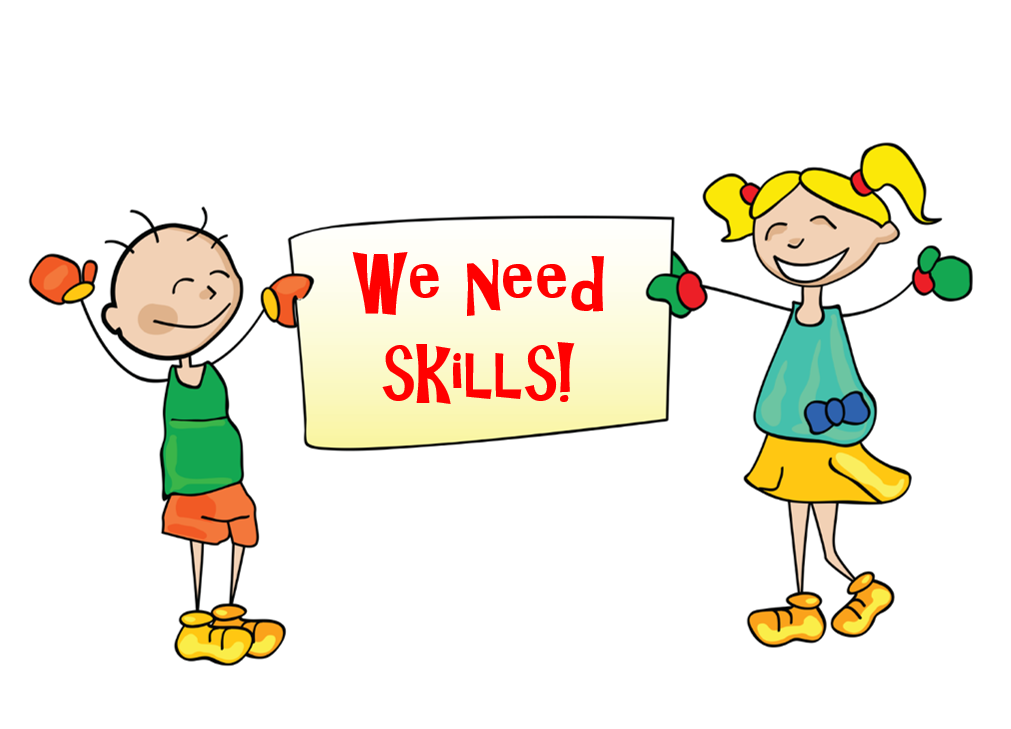A skill is the ability, coming from one’s knowledge, practice, and/or aptitude to do something well. The importance of skills is being stressed more today than ever because the world is becoming more technologically advanced every day. All parents hope their children gain appropriate skills as they progress through their education; but, gaining knowledge and learning skills are not necessarily the same thing. Mikhail Zinshteyn (@mzinshteyn), a program manager at the Education Writers Association, explains, “Young American workers today are more educated than ever before, but the nation’s largest generation is losing its edge against the least and most educated of other countries, according to a provocative new report. The report’s authors warn these findings portend a growing gap between rich and poor American workers and that the lackluster results threaten U.S. competitiveness in an increasingly globalized market. The report, produced by testing giant ETS, analyzes data collected by the Program for the International Assessment of Adult Competencies (PIAAC). The assessment measures the literacy and arithmetic skills of workers ages 16 through 65 in the U.S. and in other wealthy countries.”[1] Since a skill is the application of knowledge, a project-based STEM education can help students translate knowledge into skills. That’s one of the reasons I, along with a few colleagues, founded The Project for STEM Competitiveness — to help students make the connection between knowledge and skills.
Anne Fisher (@anbfisher) reports researchers were surprised by the PIAAC results. After all, she writes, “We hear about the superior tech savvy of people born after 1980 so often that we tend to assume it must be true. But is it?”[2] If America is going to remain competitive in a technically-advanced world, ensuring our children learn appropriate skills is essential. Currently we don’t seem to be doing very well at helping our children turn knowledge into skills. Fisher explains:
“Not only do Gen Y Americans lag far behind their overseas peers by every measure, but they even score lower than other age groups of Americans. Take literacy, for instance. American Millennials scored lower than their counterparts in every country that participated except Spain and Italy. (Japan is No. 1.) In numeracy, meaning the ability to apply basic math to everyday situations, Gen Yers in the U.S. ranked dead last.”
Tom Vander Ark (@tvanderark), a noted education advocate, asks, “What are the major milestones in K-12 education? The traditional way to answer that question are notable points on academic skill progressions. But given the importance of 21st century skills and an innovation mindset, a sequence of deeper learning experiences is a new way to think about K-12 milestones.”[3] When it comes to guiding the education ship, we cannot steer by its wake. Education leaders need to take the long view in order to discover potential skills today’s students will need by the time they enter the workforce. Gwen Moran (@gwenmoran) , named a Small Business Influencer Awards Top 100 Champion in 2012, asks, “What are the skills we need to build now to remain employable over the next decade? While specific abilities and knowledge will certainly vary from industry to industry, there are some overarching trends that will affect most of us.” Moran identifies several such skills — and they might surprise you. The first skill is trendspotting — not exactly a common classroom subject. Moran explains why today’s workers need that skill:
“With the workplace changing so quickly, it’s essential to develop systems to not only monitor those changes, but to distill the information and training you’ll need to keep up with them. That means staying abreast of industry developments, taking classes, attending trade events, and following thought leaders who are talking about your sector. It also means being observant about the day-to-day tasks and functions that matter and how they’re changing, separating anomalies from trends.”
Educators should ask themselves how they can teach their students to be trend spotters. Vander Ark believes “deeper learning” could be the answer. “Deeper learning experiences,” he writes, “develop the mindsets, learning strategies, self-management skills and social skills necessary to be career ready.” Deeper learning experiences may also help students learn other skills Moran believes tomorrow’s workers will need. Another skill she identifies is collaborating in new ways. Moran explains, “Two trends are converging that will force us to get comfortable collaborating in new ways. First, companies are using more freelancers and soloist services — the so-called ‘gig economy’ — so it’s important to be able to work effectively with disparate teams.” One of the reasons I like project-based learning is because it helps students learn how to work effectively in teams. Because the future workplace will be more automated, another skill Moran believes tomorrow’s workers will need is emotional intelligence. She explains, “It sounds trite, but the one thing machines will have a tough time doing is building relationships, [says Jacob Morgan, author of The Future of Work: Attract New Talent, Build Better Leaders, and Create a Competitive Organization, and cofounder of The Future of Work Community]. Developing emotional intelligence — empathy, embracing vulnerability, building strong connections your co-workers and your network — will go a long way to keeping you highly marketable, he says.”
Pamela Livingston (@plivings), a Senior Product Manager at Schoolwire, told Anthony Salcito (@AnthonySalcito), Vice President of Worldwide Education at Microsoft, “I believe there is a need for a new 21st century skill of digital appropriateness — knowing when to use technology — and how — so technology itself is not the focus, but so that the learning, problem solving and growth is the goal. This is possible and within our grasp but educators need to take the lead. … It’s not about hardware it’s about philosophy and the whole thinking of challenging students to solve today’s problems. If they can think well and synthesize effectively, we’ll succeed as a country. Not facts, not memorization, but thinking and being creative are the vital skills we need.”[4] Project-based STEM education curricula can help students think critically, apply knowledge to practical problems, and be creative. Like me, Vander Ark believes that students need to be well-rounded if they are going to be good citizens and effective employees. His vision of deeper learning involves ten areas to achieve that goal. They are: Specific goals for post-secondary education; careers training; community service; visual and performing arts; problem solving; publication; world language fluency; team building; project management; and, personal wellness. He concludes, “If we work with young people to co-construct compelling experiences, … while providing feedback on discrete skills, … more students will graduate ready for a project-based world.”
Footnotes
[1] Mikhail Zinshteyn, “The Skills Gap: America’s Young Workers Are Lagging Behind,” The Atlantic, 17 February 2015.
[2] Anne Fisher, “American Millennials are among the world’s least skilled,” Fortune, 10 March 2015.
[3] Tom Vander Ark, “K-12 Milestones: What Should Students Know and Be Able to Do and When?” Getting Smart, 10 June 2016.
[4] Anthony Salcito, “Pam Livingstone,” Daily Edventures, 5 November 2013.





